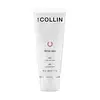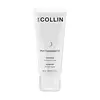What's inside
What's inside
 Key Ingredients
Key Ingredients

 Benefits
Benefits

 Concerns
Concerns

 Ingredients Side-by-side
Ingredients Side-by-side

Water
Skin ConditioningGlycerin
HumectantCetearyl Isononanoate
EmollientIsohexadecane
EmollientPentylene Glycol
Skin ConditioningDicaprylyl Carbonate
EmollientKrameria Triandra Root Extract
Skin ConditioningArachidyl Alcohol
EmollientDimethicone
EmollientSimmondsia Chinensis Seed Oil
EmollientGlycine Soja Sterols
EmollientPanthenol
Skin ConditioningXylitylglucoside
HumectantAnhydroxylitol
HumectantAllantoin
Skin ConditioningSodium Hyaluronate
HumectantMadecassoside
AntioxidantAsparagopsis Armata Extract
Skin ProtectingXylitol
HumectantBiosaccharide Gum-2
Skin ConditioningBiosaccharide Gum-1
HumectantAscophyllum Nodosum Extract
Skin ConditioningGlucose
HumectantTripleurospermum Maritimum Extract
Skin ProtectingBoswellia Serrata Extract
Skin ConditioningHoney Extract
HumectantRosa Damascena Flower Extract
MaskingCamellia Sinensis Leaf Extract
AntimicrobialAspalathus Linearis Extract
Skin ConditioningTetrapeptide-14
Skin ConditioningChlorphenesin
AntimicrobialPhenoxyethanol
PreservativeHexamidine Diisethionate
EmollientSodium Benzoate
MaskingSorbic Acid
PreservativePotassium Sorbate
PreservativeTocopherol
AntioxidantSodium Dehydroacetate
PreservativeBehenyl Alcohol
EmollientHydrogenated Starch Hydrolysate
HumectantButylene Glycol
HumectantGlyceryl Stearate Se
EmulsifyingPEG-100 Stearate
Squalane
EmollientArachidyl Glucoside
EmulsifyingPolyacrylate-13
Carbomer
Emulsion StabilisingTriethanolamine
BufferingGlyceryl Polyacrylate
Polyisobutene
Disodium EDTA
Polysorbate 20
EmulsifyingSorbitan Isostearate
Emulsifying1,2-Hexanediol
Skin ConditioningCaprylyl Glycol
EmollientRicinoleth-40
CleansingUndecylenic Acid
CleansingWater, Glycerin, Cetearyl Isononanoate, Isohexadecane, Pentylene Glycol, Dicaprylyl Carbonate, Krameria Triandra Root Extract, Arachidyl Alcohol, Dimethicone, Simmondsia Chinensis Seed Oil, Glycine Soja Sterols, Panthenol, Xylitylglucoside, Anhydroxylitol, Allantoin, Sodium Hyaluronate, Madecassoside, Asparagopsis Armata Extract, Xylitol, Biosaccharide Gum-2, Biosaccharide Gum-1, Ascophyllum Nodosum Extract, Glucose, Tripleurospermum Maritimum Extract, Boswellia Serrata Extract, Honey Extract, Rosa Damascena Flower Extract, Camellia Sinensis Leaf Extract, Aspalathus Linearis Extract, Tetrapeptide-14, Chlorphenesin, Phenoxyethanol, Hexamidine Diisethionate, Sodium Benzoate, Sorbic Acid, Potassium Sorbate, Tocopherol, Sodium Dehydroacetate, Behenyl Alcohol, Hydrogenated Starch Hydrolysate, Butylene Glycol, Glyceryl Stearate Se, PEG-100 Stearate, Squalane, Arachidyl Glucoside, Polyacrylate-13, Carbomer, Triethanolamine, Glyceryl Polyacrylate, Polyisobutene, Disodium EDTA, Polysorbate 20, Sorbitan Isostearate, 1,2-Hexanediol, Caprylyl Glycol, Ricinoleth-40, Undecylenic Acid
Water
Skin ConditioningStearic Acid
CleansingPolyethylene
AbrasiveAlumina
AbrasiveTalc
AbrasiveParaffin
PerfumingCetearyl Alcohol
EmollientSodium Lauryl Sulfate
CleansingSodium Cetearyl Sulfate
CleansingHydrogenated Polyisobutene
EmollientGinkgo Biloba Leaf Extract
Skin ConditioningCyclomethicone
EmollientOctyldodecanol
EmollientLecithin
EmollientArachidyl Propionate
EmollientTocopheryl Acetate
AntioxidantRetinyl Palmitate
Skin ConditioningEthyl Linoleate
EmollientSimmondsia Chinensis Seed Oil
EmollientPropylene Glycol
HumectantDiazolidinyl Urea
PreservativeMethylparaben
PreservativePropylparaben
PreservativeViola Tricolor Extract
EmollientCentaurea Cyanus Callus Lysate Extract
Skin ProtectingMalva Sylvestris Extract
AstringentTitanium Dioxide
Cosmetic ColorantTriethanolamine
BufferingAllantoin
Skin ConditioningCitrus Limon Peel Oil
MaskingRosmarinus Officinalis Stem Oil
PerfumingCymbopogon Nardus Oil
MaskingMentha Arvensis Herb Oil
PerfumingPhenoxyethanol
PreservativeEthylparaben
PreservativeButylparaben
MaskingBHA
AntioxidantWater, Stearic Acid, Polyethylene, Alumina, Talc, Paraffin, Cetearyl Alcohol, Sodium Lauryl Sulfate, Sodium Cetearyl Sulfate, Hydrogenated Polyisobutene, Ginkgo Biloba Leaf Extract, Cyclomethicone, Octyldodecanol, Lecithin, Arachidyl Propionate, Tocopheryl Acetate, Retinyl Palmitate, Ethyl Linoleate, Simmondsia Chinensis Seed Oil, Propylene Glycol, Diazolidinyl Urea, Methylparaben, Propylparaben, Viola Tricolor Extract, Centaurea Cyanus Callus Lysate Extract, Malva Sylvestris Extract, Titanium Dioxide, Triethanolamine, Allantoin, Citrus Limon Peel Oil, Rosmarinus Officinalis Stem Oil, Cymbopogon Nardus Oil, Mentha Arvensis Herb Oil, Phenoxyethanol, Ethylparaben, Butylparaben, BHA
Ingredients Explained
These ingredients are found in both products.
Ingredients higher up in an ingredient list are typically present in a larger amount.
Allantoin is a soothing ingredient known for its protective and moisturizingg properties. Because of this, it is often added to products with strong active ingredients.
Studies show higher concentrations of this ingredient can promote wound healing.
Though it can be derived from the comfrey plant, allantoin is produced synthetically for cosmetic products to ensure purity.
Learn more about AllantoinPhenoxyethanol is a preservative that has germicide, antimicrobial, and aromatic properties. Studies show that phenoxyethanol can prevent microbial growth. By itself, it has a scent that is similar to that of a rose.
It's often used in formulations along with Caprylyl Glycol to preserve the shelf life of products.
This oil comes from the seeds of the desert shrub called Jojoba. It is more commonly known as jojoba oil, a non-comedogenic oil.
Jojoba oil does not contain fragrance and has many fatty-acids, making it a great soothing ingredient.
It also contains Vitamin E, a great moisturizing ingredient. Vitamin E is also an antioxidant and protects your skin against oxidative damage.
This ingredient humectant properties, meaning it helps draw moisture from the air. This helps keep your skin hydrated.
While jojoba has antibacterial properties, it is only able to kill some strains of bacteria.
Studies also show it helps in wound healing. In fact, Indigenous cultures have used jojoba as a moisturizer and to help treat burns for centuries.
Fun fact: Jojoba oil similar to natural human skin sebum, so it has a great effect on dry skin. It is also promising with helping to regulate sebum production.
Due to its fatty acid content, Jojoba oil may not be fungal acne safe. We recommend speaking with a professional if you have any concerns.
Learn more about Simmondsia Chinensis Seed OilTriethanolamine is an emulsifier and pH adjuster. It is created using ethylene oxide and ammonia. This gives Triethanolamine a nitrogen core and a similar scent to ammonia.
As an emulsifier, it prevents ingredients from separating and enhances texture by adding volume to a product.
PH adjusters are common in cosmetic products. The pH of a product can affect the effectiveness of other ingredients. A product with a high pH may also irritate the skin.
Learn more about TriethanolamineWater. It's the most common cosmetic ingredient of all. You'll usually see it at the top of ingredient lists, meaning that it makes up the largest part of the product.
So why is it so popular? Water most often acts as a solvent - this means that it helps dissolve other ingredients into the formulation.
You'll also recognize water as that liquid we all need to stay alive. If you see this, drink a glass of water. Stay hydrated!
Learn more about Water